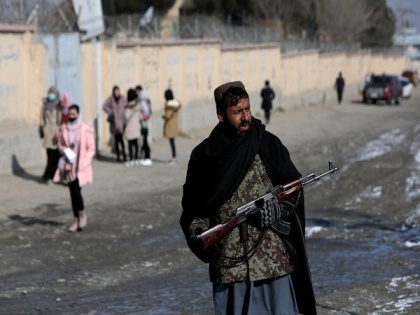Women, journalists are targets of violence in Afghanistan
By ANI | Updated: April 15, 2022 20:30 IST2022-04-15T20:20:35+5:302022-04-15T20:30:02+5:30
Violence against civilians and other politically motivated violence continue to take place in Afghanistan after eight months of Taliban takeover of the country.

Women, journalists are targets of violence in Afghanistan
Violence against civilians and other politically motivated violence continue to take place in Afghanistan after eight months of Taliban takeover of the country.
Since the fall of Kabul, civilians have continued to be targeted by the Taliban and the Islamic State (IS), as well as by unidentified armed groups. The Taliban has been the main perpetrator of violence targeting civilians, perpetrating over half of the violence targeting civilians recorded by ACLED since 15 August 2021.
Journalists and women, have been increasingly targeted, as have members of the Ashraf Ghani government and security forces.
This information has been compiled by the Armed Conflict Location & Event Data Project, or ACLED, in partnership with an Afghan-run violence monitoring group Afghan Peace Watch.
According to ACLED data, violence targeting journalists reached a high in August 2021 as the Taliban took over. Journalists have notably been targeted while covering demonstrations against the Taliban, particularly those led by women. ACLED records an increase in cases where journalists were attacked or harmed during demonstrations in September 2021.
This repressive media environment has forced organizations monitoring political violence and protests in the country to adjust in order to accurately capture the reality on the ground.
As ACLED moved to adapt to the changing media landscape after the fall of Kabul, it expanded its sourcing through the addition of new traditional media sources in several local languages, as well as deepening its use of forms of 'new media,' specifically social media.
The analysis underscores the growing challenge of monitoring reports of political violence at a time when more than 300 Afghan news outlets have shut down.
Roudabeh Kishi, ACLED'S director of research and innovation, told The Intercept that "The reporting environment, in addition to the political landscape of course, changed really dramatically after the Taliban takeover in August."
"The outlets that remain open are facing a lot of censorship, and they are really unable to report on what's happening on the ground because of the security risks that they face. [Journalists] that do risk reporting anything that contradicts the Taliban narrative have faced threats, intimidation. And even beyond that, some have been jailed, some have been tortured."
ACLED noted that attacks against civilians have increased in recent months. As scores of journalists and human rights defenders have fled the country following the Taliban takeover, groups monitoring incidents of violence have had to adapt.
"It has become extremely difficult to collect reliable data," Ghulam Sakhi, a researcher with Afghanistan Human Rights and Democracy Organization, an Afghan-based human rights group whose members are now abroad, told The Intercept.
Sakhi noted that victims of violence, particularly those released from Taliban detention, are being intimidated not to report their experiences.
( With inputs from ANI )
Disclaimer: This post has been auto-published from an agency feed without any modifications to the text and has not been reviewed by an editor
Open in app